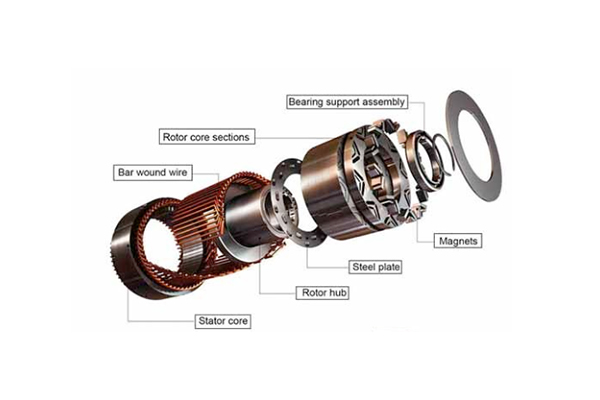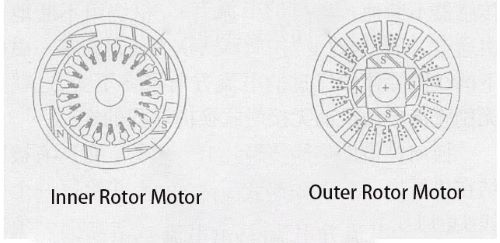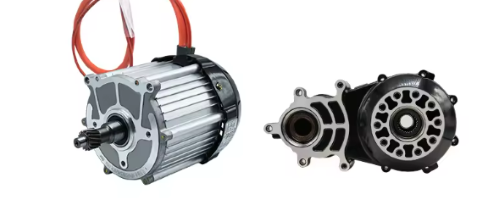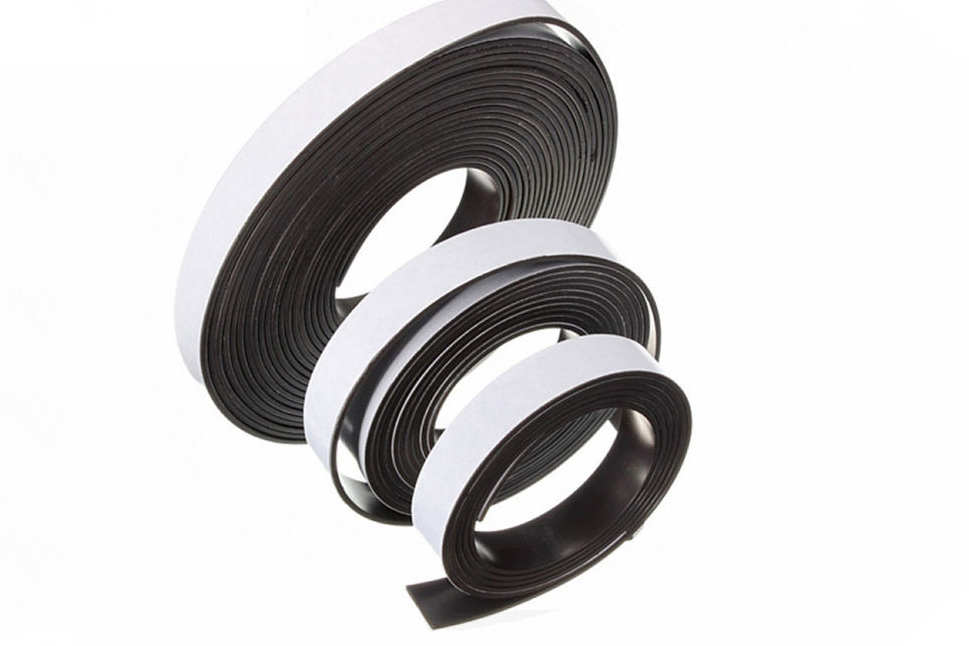Inner vs. Outer Rotor Permanent Magnet Motors
Introduction
Permanent magnet synchronous motors (PMSMs) are pivotal in modern electrical engineering, offering efficiency, reliability, and performance across various applications. Among PMSMs, inner rotor and outer rotor configurations stand out due to their distinct structural differences and performance characteristics.
This article will discuss their fundamental principles, structural differences, applications, and comparative advantages and disadvantages.
What Are Permanent Magnet Motors?

A permanent magnet synchronous motor comprises several essential components: the stator (including the stator core, windings, and housing), the permanent magnet rotor (including the rotor core, permanent magnets, and shaft), end caps, bearings, junction box, and feedback components.
In PMSMs, the stator's influence is primarily through the distribution of windings and the number of stator slots, which is akin to asynchronous motors. However, the magnet rotor significantly impacts the magnetic circuit, with different permanent magnet rotor structures substantially affecting motor performance.
Related reading:
Advantages and Applications of Permanent Magnet Synchronous Motor
Permanent Magnet Rotor vs. Induction Rotor: A Comparative Analysis in Electric Motor Technology
What Are the Differences between Inner and Outer Rotor Permanent Magnet Motors?

1. Structural Difference
In inner rotor permanent magnet motors, the rotor is situated inside, surrounded by the stator windings. This design means the permanent magnets are mounted on the internal rotor, which rotates within the stationary stator. The outer shell remains static, while the internal components rotate.
Conversely, in outer rotor permanent magnet motors, the rotor is on the outside, encasing the stator. Here, the internal stator remains fixed, and the external rotor, containing the permanent magnets, rotates. This configuration positions the magnets on the external rotor, surrounding the internal stator.
2. Magnet Size and Design
The outer version features smaller permanent magnets and reduced axial dimensions. This design choice contributes to better system stability during operation.
In contrast, the inner version has larger permanent magnets and increased axial dimensions. This configuration can result in a higher center of gravity and potentially less stability during operation.
3. Speed Capabilities
Rotor Permanent Magnet Motors typically exhibit significantly higher rotational speeds compared to outer rotor motors. This characteristic makes them suitable for high-speed applications requiring quick dynamic responses.
4. Application Suitability
Rotor Permanent Magnet Motors are used in high-speed applications such as power tools, electric vehicle drive systems, gas turbines, and compressors due to their ability to achieve higher rotational speeds.
The outer ones are often found in low-speed, high-torque applications such as electric bicycles, scooters, and wind turbines. Their design allows for smooth operation and lower noise levels, making them ideal for these applications.
Stanford Magnets now provides high-performance magnet rotor components and sub-assemblies for a range of applications including aerospace, defense, industrial, automotive, and motorsport. If you need more specific details about their products or any other assistance, feel free to ask!
Table 1. Inner vs. Outer Rotor Permanent Magnet Motors
|
Aspect |
Inner Rotor Motors |
Outer Rotor Motors |
|
Structure |
Rotor inside, surrounded by stator windings |
Rotor outside, encasing the stator |
|
Size and Design |
Larger magnets, increased axial dimensions |
Smaller magnets, reduced axial dimensions |
|
Speed |
Higher rotational speeds |
Lower rotational speeds |
|
Applications |
High-speed applications (power tools, EVs, turbines) |
Low-speed, high-torque uses (e-bikes, scooters, wind turbines) |
Inner vs. Outer Rotor Permanent Magnet Motors

1. Inner Rotor Motors
- Advantages:
- Lightweight Design: Fan blades and other components are lighter, contributing to a compact and efficient design.
- Ease of Production and Assembly: The internal structure is straightforward, facilitating easier manufacturing and assembly processes.
- Lower Costs: Generally, inner rotor motors are more cost-effective to produce due to simpler design and assembly requirements.
- Disadvantages:
- Higher Operating Temperatures: The internal rotor can result in less efficient heat dissipation, leading to higher operating temperatures.
- Higher Power Consumption: The design may result in higher power consumption compared to outer rotor motors.
- Voltage Instability: Inner rotor motors can experience unstable voltage, increasing the risk of motor damage and reducing lifespan.
2. Outer Rotor Motors
- Advantages:
- Enclosed Structure: Can be designed as fully enclosed units, providing protection against external elements and contaminants.
- Quick Start-Up: Capable of rapid start-up and reaching operational speeds quickly.
- Low Power Consumption: Generally more efficient in terms of power usage.
- High Efficiency and Longevity: The design allows for high efficiency and longer operational life.
- Disadvantages:
- Poor Sealing: Despite being enclosed, outer rotor motors may suffer from sealing issues, allowing contaminants to enter.
- Larger Rotor Inertia: The external rotor design leads to higher inertia, affecting dynamic performance.
- Higher Noise Levels: Outer rotor motors can produce more noise due to the external rotation mechanism.
- Stringent Dynamic Balance Requirements: The design necessitates high precision in dynamic balancing to ensure smooth operation.
Conclusion
Inner rotor and outer rotor permanent magnet motors each offer distinct advantages and disadvantages, making them suitable for different applications.
Inner rotor motors excel in high-speed, high-dynamic response scenarios, making them ideal for tools, vehicles, and machinery requiring rapid and precise movements. Outer rotor motors, on the other hand, are better suited for applications needing high torque, smooth operation, and low noise, such as in transportation and renewable energy sectors.
As technology advances, both inner and outer rotor motors will continue to play crucial roles in various industries, driving innovation and efficiency in electrical engineering and beyond.















